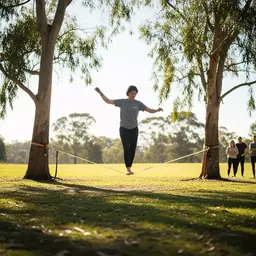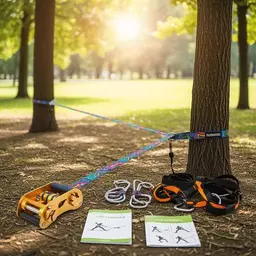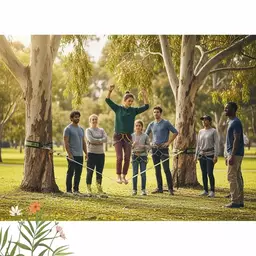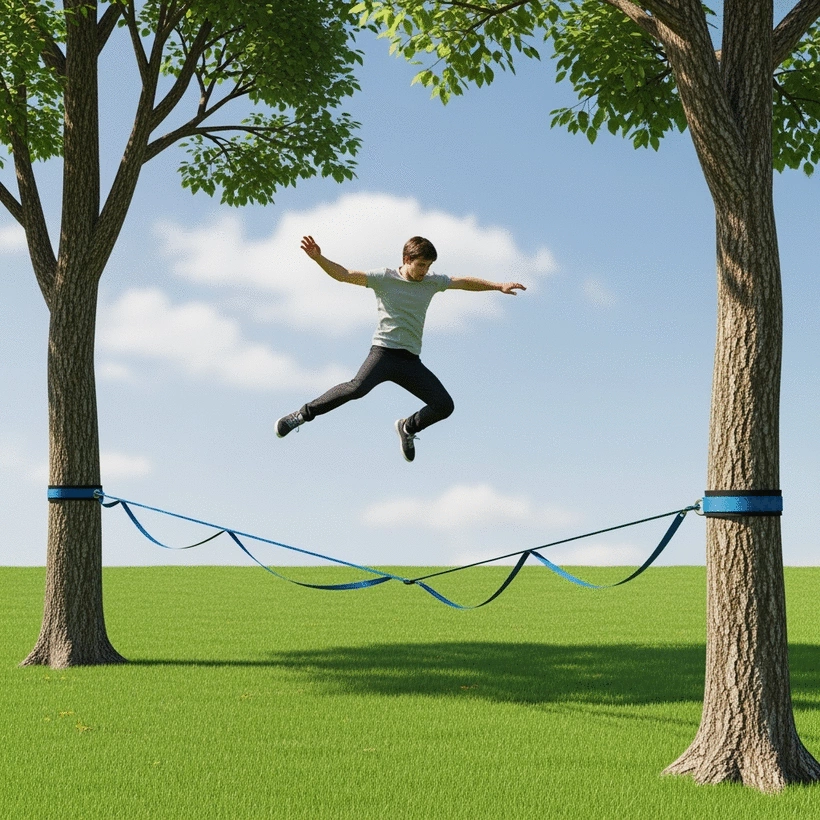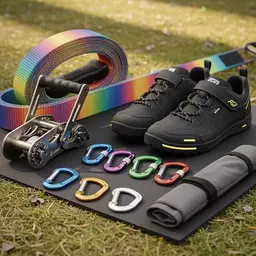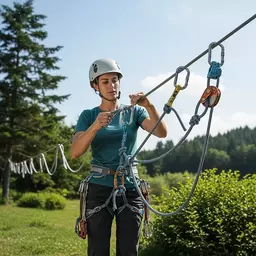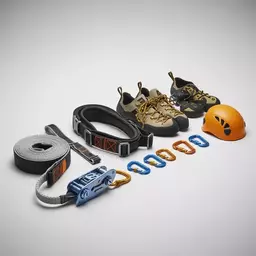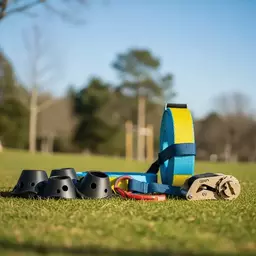Mastering Longline and Highline Rigging
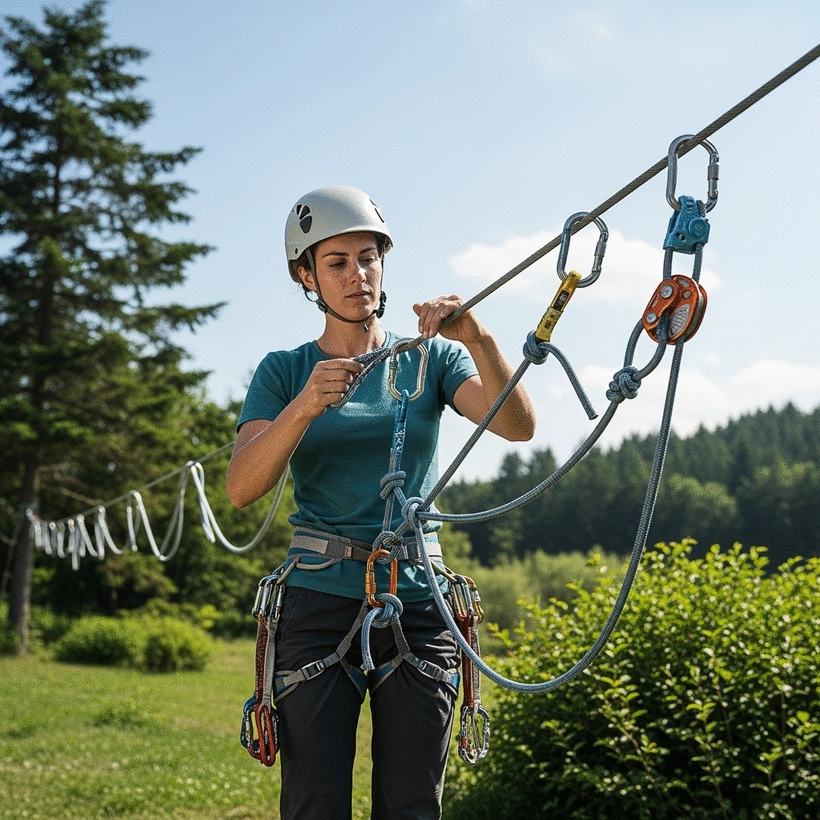
What if you could elevate your slacklining skills and enjoy thrilling experiences all while ensuring your safety? Mastering advanced slackline rigging techniques is the key to unlocking these adventures!
What You Will Learn
- Understanding longline and highline setups enhances your balance and confidence.
- Mastering slackline rigging is crucial for improved safety and an enjoyable experience.
- Different slackline techniques cater to all skill levels, from beginners to advanced athletes.
- Recognizing and addressing setup failures is vital for ensuring safety during slacklining.
- Engaging with the slackline community can provide valuable insights and motivation.
- Effective line management strategies can save time and prolong the life of your gear.
- Preparing for your slackline adventure enhances confidence and safety.
Key Aspects of Advanced Slackline Rigging
Exploration of advanced slackline techniques involves understanding setup types, the importance of proper rigging, and various skill levels. Below is a comparison of longline and highline setups, alongside the benefits of mastering rigging and different technique levels. For more foundational knowledge, consider reading our beginner's guide to slackline setup.
Longline vs. Highline Setups
**Longline:** 30m+, enhances balance.
**Highline:** Heights for thrill, extra safety.
Transitioning from longlining to highlining builds confidence and skill.
Importance of Mastering Rigging
**Safety:** Prevents accidents & injuries.
**Performance:** Improves balance & enjoyment.
**Community:** Fosters knowledge sharing.
Proper rigging elevates skills and contributes to a vibrant community.
Slackline Technique Levels
**Basic:** Walking, turning, getting on/off.
**Intermediate:** Jumps, spins, basic tricks.
**Advanced:** Highline tricks, dynamic movements.
Explore new techniques to push limits and enjoy progression.
Troubleshooting Rigging Issues
**Sagging Line:** Re-tension or adjust.
**Wind Interference:** Use dynamic lines, calm days.
**Gear Failure:** Inspect anchors, listen for noises.
Be prepared for unexpected challenges by understanding effective troubleshooting.
Understanding Advanced Slackline Rigging Techniques
When it comes to slacklining, mastering advanced rigging techniques is essential for safety and performance. These skills not only enhance your balance practice but also open the doors to thrilling new experiences like longlining and highlining. Ready to dive into the fascinating world of slackline rigging? Let’s get started!
In this section, I’ll share my insights on what longline and highline setups entail, the importance of mastering slackline rigging, and various techniques suitable for every skill level. Whether you’re a beginner or a seasoned pro, there’s something here for everyone!
What Are Longline and Highline Setups?
Longlines and highlines represent the next level in slacklining. A longline setup typically involves a slackline that's stretched over longer distances, allowing for greater balance challenges and fun! Highlining, on the other hand, elevates the experience by rigging the slackline at a significant height above the ground, often between two cliffs or tall trees.
- Longline: Often 30 meters or more, ideal for enhancing balance skills.
- Highline: Set up at heights that bring excitement and a view, usually requiring additional safety measures.
- Combining Techniques: Many slackliners enjoy transitioning from longlining to highlining to build confidence and skill.
As you explore these setups, remember that your gear and safety practices are crucial to a successful experience. I’ve seen many slackliners thrive by gradually increasing their challenge level, so take it one step at a time!
Importance of Mastering Slackline Rigging
Mastering slackline rigging is not just a skill; it’s a fundamental part of enjoying the sport to its fullest. A well-rigged slackline can make the difference between a thrilling adventure and a frustrating experience. Safety is paramount, especially when you’re venturing into longline and highline territory. To ensure you're always setting up safely, refer to our comprehensive slackline safety setup guide.
- Improved Balance: Better rigging leads to a more enjoyable experience.
- Enhanced Safety: Proper techniques help prevent accidents and injuries.
- Community Engagement: Sharing knowledge about rigging fosters a supportive slacklining community.
At Slackline Shop Australia, I strive to provide resources that empower slackliners to rig safely and effectively. When you master these techniques, you not only elevate your skills but also contribute to a vibrant community of enthusiasts eager to share tips and experiences!
Exploring Different Slackline Techniques for All Levels
Slacklining is a diverse sport, and there are numerous techniques to explore, no matter your skill level! From beginners practicing balance on a short line to advanced athletes performing tricks on highlines, every technique offers unique challenges and rewards.
- Basic Techniques: Walking forward and backward, turning, and getting on and off the line.
- Intermediate Techniques: Incorporating tricks like jumps or spins.
- Advanced Techniques: Tricks on highlines, including flips and dynamic movements.
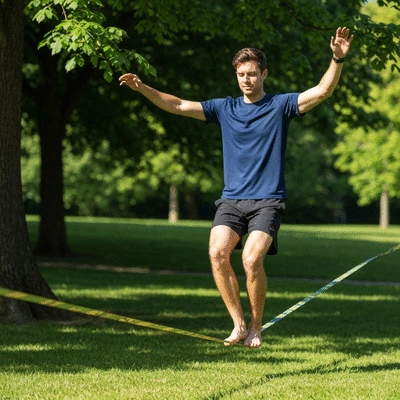
Whatever your experience level, I encourage you to try new techniques! Slacklining is all about progression and having fun while pushing your limits. With the right support and resources, such as those offered at Slackline Shop Australia, you can confidently explore new skills and take your slacklining to the next level!
Pro Tip
As you advance in your slacklining journey, consider incorporating visualization techniques into your practice. Visualizing your movements and successful crossings can significantly enhance your confidence and performance. Before stepping onto the line, take a moment to picture yourself executing each skill flawlessly. This mental preparation can create a stronger mind-body connection, leading to improved balance and technique!
Practical Troubleshooting for Common Rigging Issues
When you're out there slacklining, especially on longlines or highlines, it's crucial to be prepared for the unexpected. No matter how careful you are in setting up your rig, issues can arise. That's why understanding how to recognize and address setup failures is key to ensuring a safe and enjoyable experience. Let's delve into some common challenges and how to tackle them!
Recognizing and Addressing Setup Failures
A successful slackline setup requires keen observation and an understanding of how your gear interacts. One of the first signs of trouble might be excessive sagging in your line, which can compromise balance and safety. Always check the tension before stepping onto the line!
- Watch for any noticeable dips or excessive slack in your line.
- Inspect anchor points for stability and ensure they are secure.
- Listen for any unusual noises from gear, indicating potential failure.
If you do notice any of these issues, it's essential to take immediate action. Adjust your rigging by re-tensioning the line or inspecting your anchors. Remember, safety should always come first!
Effective Solutions for Common Highline Problems
Highlining presents unique challenges that require specific solutions. One common issue is wind interference. The higher you go, the more you feel the elements, and that can impact your balance. Here are a few solutions to counteract this:
- Choose calm days for highlining to minimize wind disturbances.
- Utilize a dynamic line if wind conditions are unpredictable, as it can absorb shocks better.
- Set up a lower line for practice if you're facing strong gusts.
By taking these proactive measures, you can enhance your highlining experience and improve your skills over time!
Line Management Strategies for Successful Rigging
Effective line management is crucial for a smooth rigging process and a successful slacklining experience. It’s important to keep your gear organized and ready to use. Here are some strategies I’ve found helpful:
- Label your gear to quickly identify components, especially for longlines.
- Use a dedicated bag for slackline gear to keep everything in one place.
- Practice proper coiling techniques to prevent tangles and damage.

With these line management strategies, you'll not only save time during setup but also prolong the life of your gear. It’s all about making your slacklining experience as enjoyable and hassle-free as possible!
Engaging with the Slackline Community
Slacklining is more than just a sport; it's a community filled with enthusiastic individuals eager to share knowledge and experiences. Engaging with fellow slackliners can enhance your learning process and inspire you to try new techniques!
Learning from User Experiences and Case Studies
One of the best ways to grow in slacklining is by learning from others’ experiences. Many slackliners document their journeys and challenges online. Reading case studies or watching videos can provide valuable insights into technique adjustments and rigging setups!
- Check forums for personal stories and experiences shared by other slackliners.
- Participate in online workshops to learn directly from experts.
- Follow social media accounts dedicated to slacklining for tips and advice.
These resources can be incredibly motivating and might just spark the creative approach you need for your next slackline adventure!
Connecting with Slackline Enthusiasts Online
With the rise of social media, it’s easier than ever to connect with other slackline enthusiasts. Platforms like Instagram and Facebook have groups specifically tailored for sharing tips, arranging meet-ups, and exchanging gear recommendations.
- Join online slackline groups to ask questions and share your experiences.
- Look for local slacklining events to meet up with others in your area.
- Engage in discussions about gear, techniques, and safety practices.
Building these connections can not only enhance your knowledge but also help create lasting friendships in the slacklining community!
Participating in Slackline Festivals and Competitions
What better way to immerse yourself in the slacklining culture than by attending festivals and competitions? These events provide a platform for slackliners of all levels to showcase their skills, learn, and connect.
- Discover local slackline festivals through online searches or community boards.
- Consider competing, even if you’re a beginner—it's an excellent way to gain experience!
- Attend workshops at these events to refine your skills and learn from the pros.
Participating in these activities can enrich your slacklining experience and inspire you to push your boundaries further!
Final Thoughts on Advanced Slackline Rigging
As we wrap up this section, I'd like to emphasize the importance of preparation when it comes to your slackline adventure. From understanding advanced rigging techniques to engaging with the community, each step you take enhances your overall experience!
Preparing for Your Slackline Adventure
Before you hit the line, make sure you’ve done your research and gathered all necessary gear. A well-prepared slackliner is a confident slackliner!
- Check your equipment thoroughly before each setup.
- Stay informed on best practices and innovations in the slacklining world.
- Stay physically prepared through practice and conditioning.
The combination of preparation and practice will elevate your skills and safety awareness.
Encouragement to Practice and Perfect Techniques
Remember, mastery takes time! Keep practicing, even when the going gets tough. Regular practice helps build muscle memory and boosts confidence! For tips on improving your balance and overall technique, check out our guide on slackline balance techniques for all levels.
- Set aside dedicated time each week for slacklining sessions.
- Focus on specific skills, whether they be balance, tricks, or rigging.
- Celebrate your progress, no matter how small!
Your dedication will pay off as you continue to perfect your techniques and enjoy the thrilling world of slacklining.
Exploring Future Trends in Slacklining and Highlining
As the sport evolves, new techniques and gear developments are shaping the future of slacklining. Staying updated on these trends will keep you at the forefront of the sport!
- Follow slacklining blogs and vlogs for insights on upcoming gear.
- Attend conferences or expos to see the latest advancements firsthand.
- Engage in discussions about the future direction of slacklining with fellow enthusiasts.
With each new trend, there’s an opportunity to enhance your skills and contribute to the vibrant slacklining community we cherish here at Slackline Shop Australia!
Recap of Key Points
Here is a quick recap of the important points discussed in the article:
- Master advanced rigging techniques to enhance safety and performance in slacklining.
- Understand the differences between longline and highline setups, and the importance of gear and safety practices.
- Practice various slackline techniques, from basic balance to advanced tricks, to improve your skills.
- Be prepared for common rigging issues and learn troubleshooting methods to ensure a safe experience.
- Engage with the slacklining community through social media, forums, and events to expand your knowledge and support network.
- Stay informed about new trends and techniques in slacklining to continuously enhance your skills and enjoy the sport.
Frequently Asked Questions About Advanced Slackline Rigging
- What is the main difference between longline and highline slacklining?
- Longlining involves stretching a slackline over longer distances (30m+), focusing on balance challenges. Highlining rigs the slackline at significant heights, often between cliffs, requiring additional safety measures for the thrill and view.
- Why is mastering slackline rigging important?
- Mastering rigging is crucial for both safety and performance. Proper rigging prevents accidents and injuries, improves balance and enjoyment, and fosters knowledge sharing within the slacklining community.
- What are some common rigging issues and how can they be addressed?
- Common issues include a sagging line (re-tension or adjust), wind interference (choose calm days or use a dynamic line), and gear failure (inspect anchors and listen for unusual noises). Immediate action and adjustment are key for safety.
- How can engaging with the slackline community benefit my skills?
- Connecting with the community allows you to learn from others' experiences, troubleshoot issues, discover new techniques, and stay motivated. This can happen through online forums, social media groups, and attending festivals or competitions.
- What are effective line management strategies?
- Effective strategies include labeling your gear for quick identification, using a dedicated bag for organization, and practicing proper coiling techniques to prevent tangles and prolong gear life.
